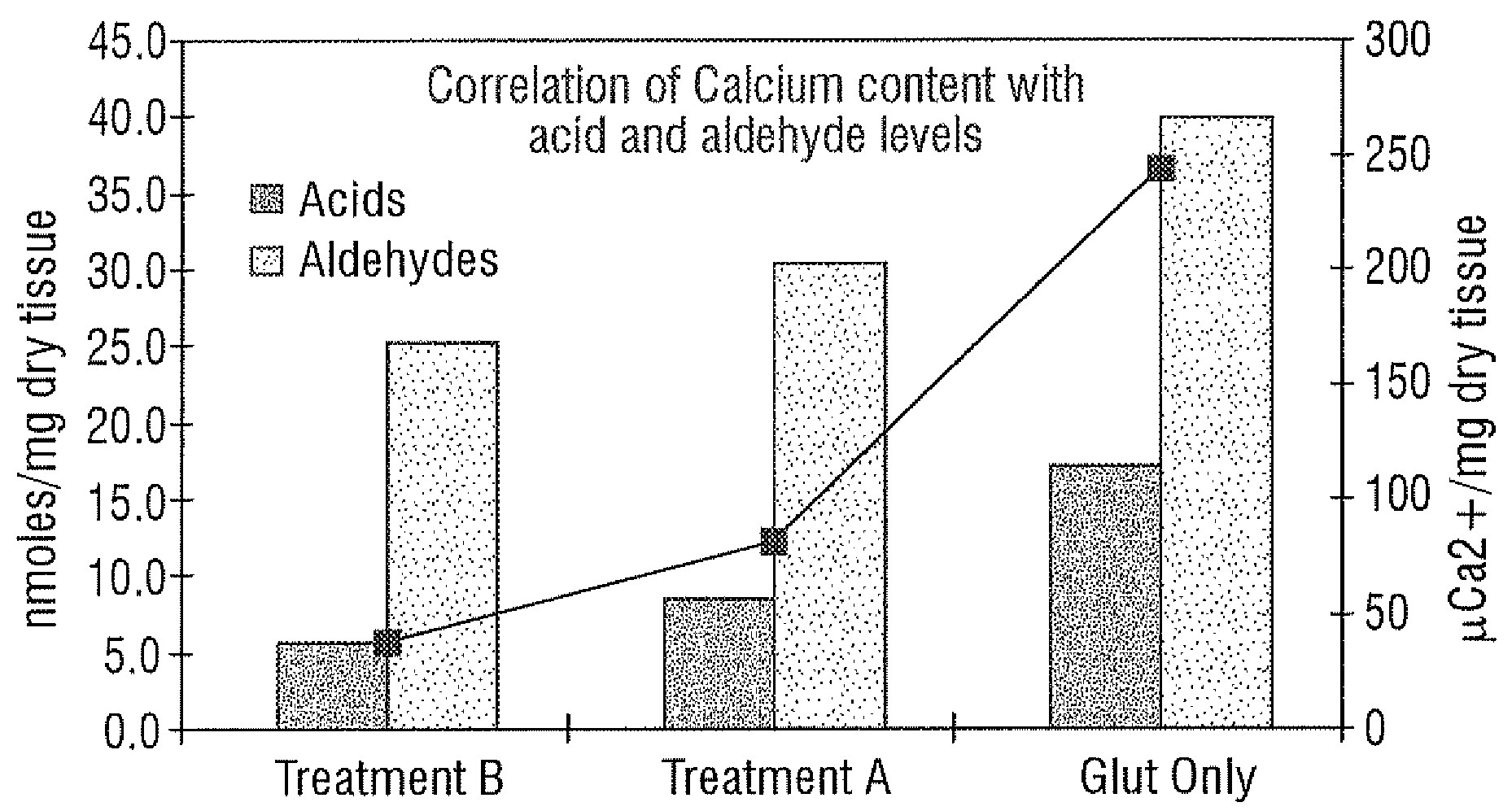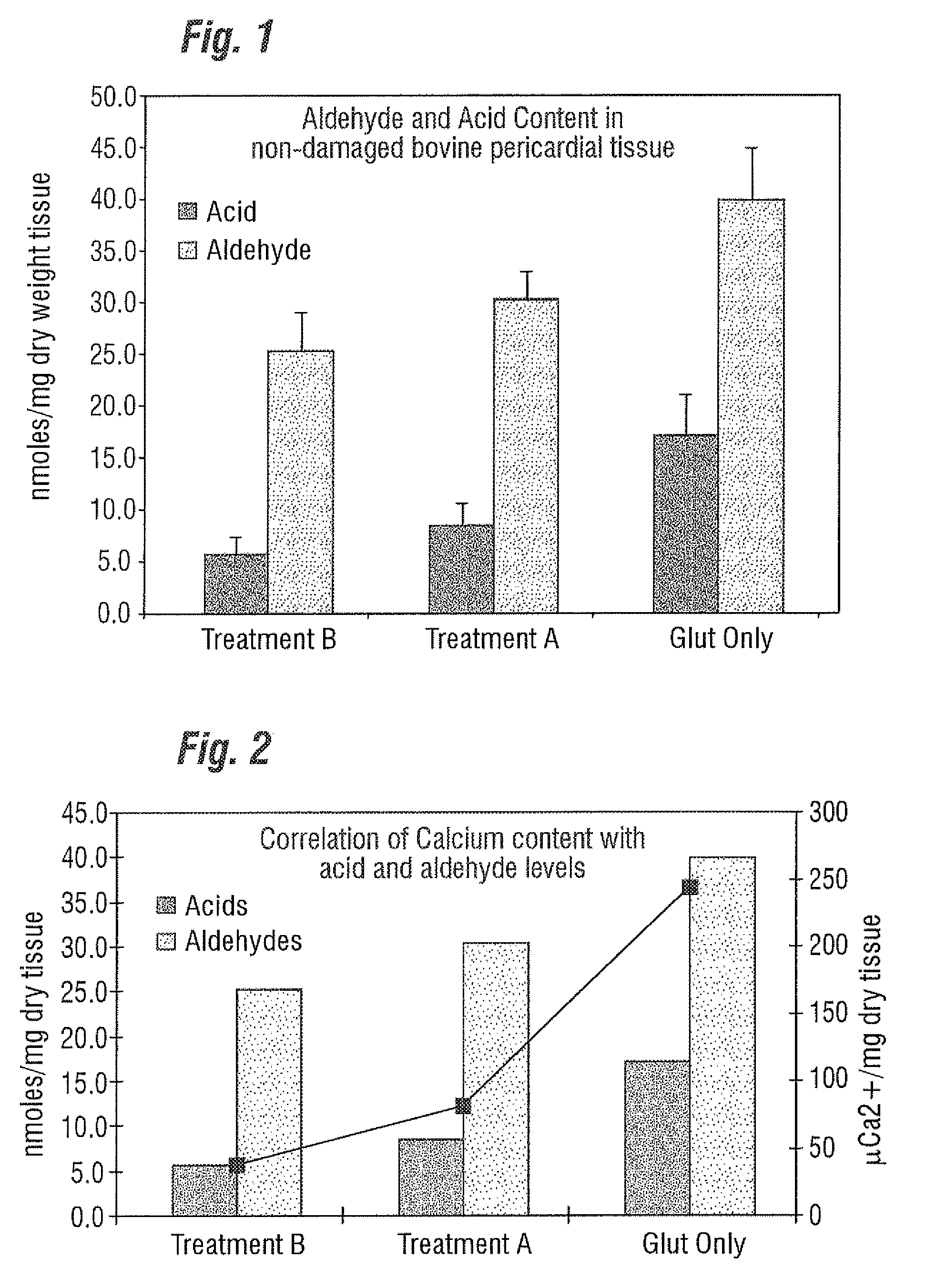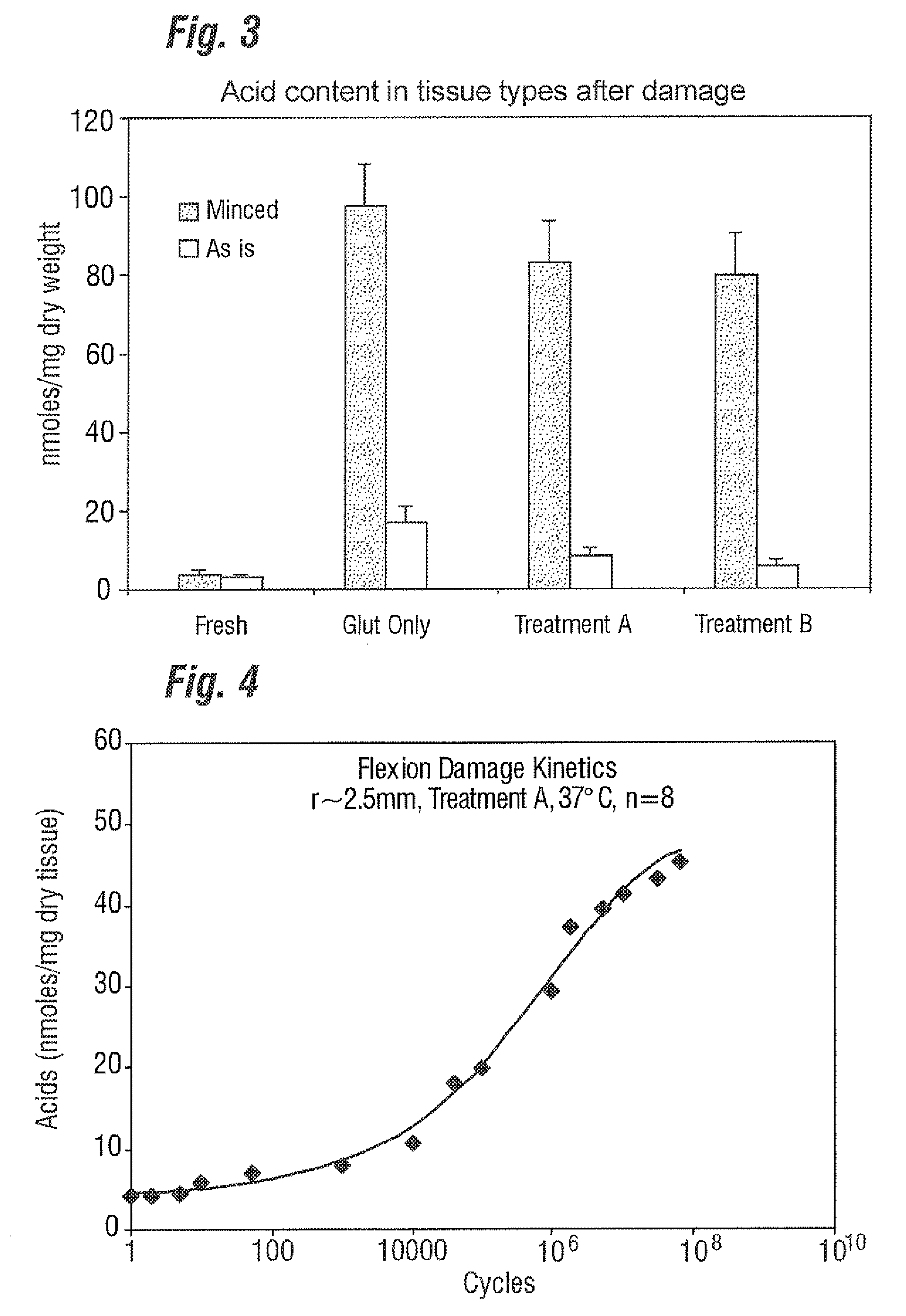Methods for pre-stressing and capping bioprosthetic tissue
a bioprosthetic tissue and pre-stressing technology, applied in the field of methods, can solve the problems of undesirable stiffening or degradation of the bioprosthetic, inability to address the changes within the tissue, and inability to achieve the desired effect of reducing in vivo calcification
- Summary
- Abstract
- Description
- Claims
- Application Information
AI Technical Summary
Benefits of technology
Problems solved by technology
Method used
Image
Examples
Embodiment Construction
[0029]Unlike the prior art that focuses only on “as-processed tissue” and without any consideration of how the tissue calcification propensity can change from imposed service stresses, the present invention provides an improved bioprosthetic tissue treatment process that is believed to greatly reduce the potential for calcification after implantation. “Bioprosthetic tissue” in this sense means at least bovine pericardium and whole porcine valves which are commonly used in bioprosthetic heart valves that must endure years and even decades without calcifying. Other tissues that may be improved by the treatment include blood vessels, skin, dura mater, pericardium, small intestinal submucosa (“SS tissue”), ligaments and tendons. “Implants” in the present application refers not only to heart valves but also to vascular prostheses and grafts, tissue grafts, bone grafts, and orbital implant wraps, among others.
[0030]A “bioprosthetic heart valve” in the present application refers to a fully...
PUM
| Property | Measurement | Unit |
|---|---|---|
| Temperature | aaaaa | aaaaa |
| Fraction | aaaaa | aaaaa |
| Frequency | aaaaa | aaaaa |
Abstract
Description
Claims
Application Information
 Login to View More
Login to View More - R&D
- Intellectual Property
- Life Sciences
- Materials
- Tech Scout
- Unparalleled Data Quality
- Higher Quality Content
- 60% Fewer Hallucinations
Browse by: Latest US Patents, China's latest patents, Technical Efficacy Thesaurus, Application Domain, Technology Topic, Popular Technical Reports.
© 2025 PatSnap. All rights reserved.Legal|Privacy policy|Modern Slavery Act Transparency Statement|Sitemap|About US| Contact US: help@patsnap.com



